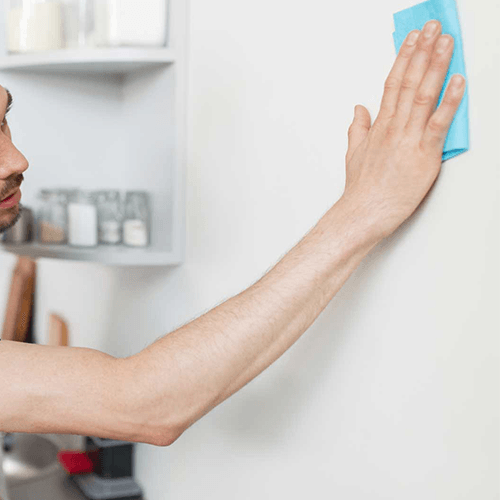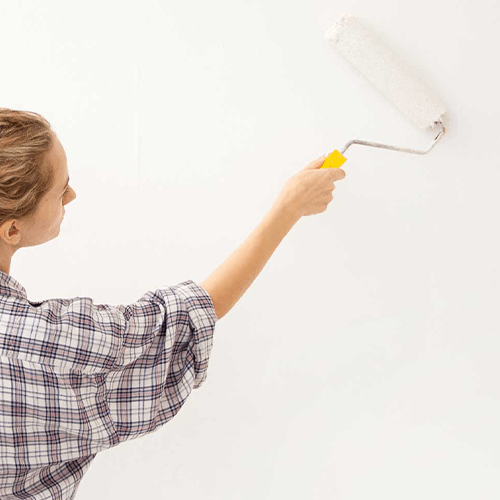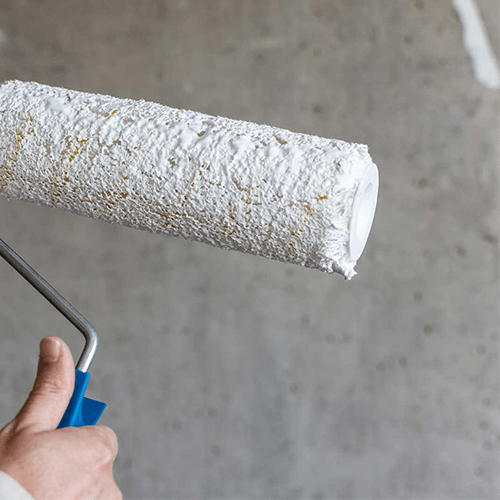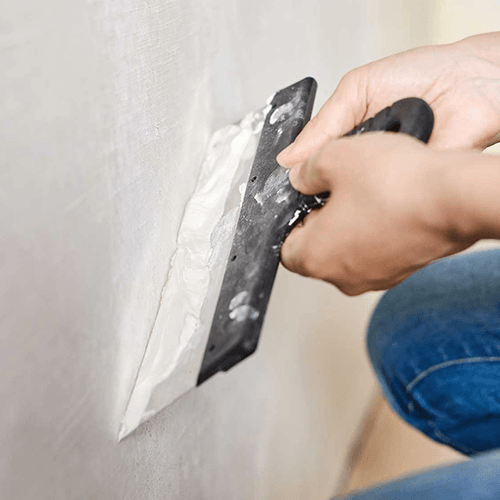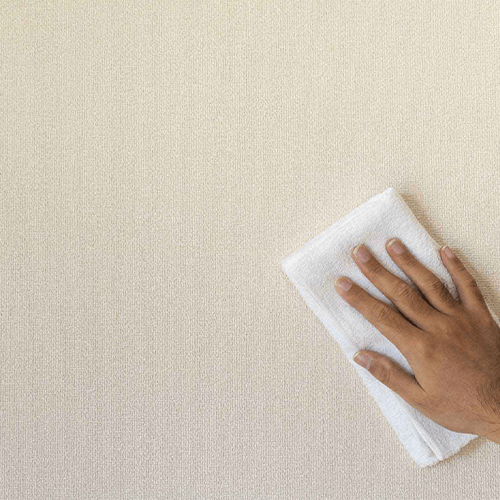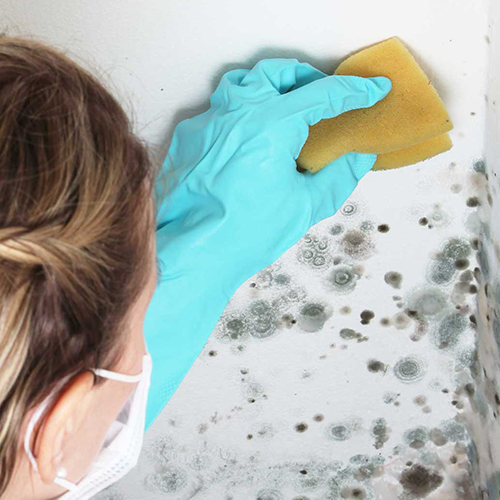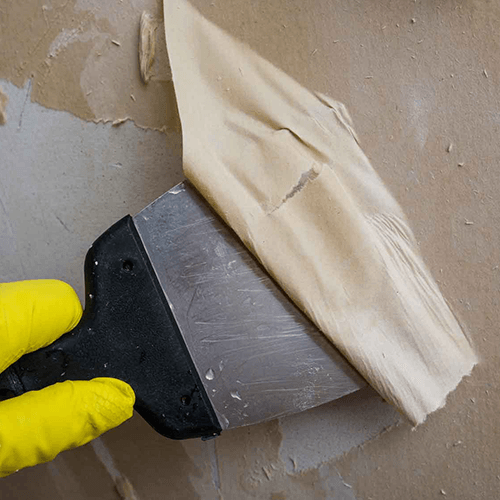How to prepare your walls for SeaStone Flex( )
What should you do before installing our concrete wallpaper
First step
Every big job starts with a small step. When it comes to wallpapering a wall, the first step is one of the most important. Wallpaper will not adhere to greasy, dirty walls, old wallpaper or paint. That is why we cannot emphasize enough how important it is to have your walls well prepared.
Apply Primer or Sealer
One coat of SeaStone adhesive primer creates a new, even surface on the wall, making it easier to slide wallcovering into place. It also prevents the wall itself from absorbing moisture, which protects against future damage. After the primer has dried, apply a SeaStone adhesive layer to the wall.
Fix holes
Nail holes, pits, cracks and irregularities in the wall should be filled with a wall repair agent before applying the primer. Use a wide blade to fix the irregularities. Push the repair material well into the hole and smooth the surface. When the material is dry, sand smooth and apply the SeaStone adhesive primer to the wall.
Cleaning walls
Surfaces coated with latex (non-glossy) sauce should be scraped (if old and peeling), sanded smooth and washed with an all-purpose cleaner. After drying, apply SeaStone primer and hang the wallcovering.
Walls covered with high gloss or satin paint should also be sealed with a SeaStone primer. In a room where mold is prevalent, wash the wall with a mixture of bleach and water. Rinse, allow to dry and apply the SeaStone primer.
Cleaning mold
Mold can appear on walls as a yellow, green, gray or black colored area. If this happens, wash the walls with a concentrated solution of a cup of bleach and a gallon of hot water. Apply with a brush or sponge and leave for an hour. Rinse with warm water, allow to dry and coat with SeaStone primer/sealer. All SeaStone Wallpapers products are mold resistant and will prevent the problem from reoccurring if all mold is removed before hanging.
Remove old wallpaper
Most old wall coverings can be removed and are easy to remove. However, if you are having trouble, you can soak your wallpaper with wallpaper remover or water with a large sponge, spray bottle or roller. If your paper isn't porous, peel off the wallpaper with a putty knife. After stripping the old wallpaper, wash the walls with a cleaner and apply SeaStone primer.
If you are installing SeaStone Flex( ) over an existing wallcovering, make sure it is securely attached to the wall and is as smooth as possible. Cut an "X" in any air bubbles and tear away the loose pieces, filling in the height differences. Sand seams and glue down any curl corners with glue. Finally, seal the existing wall with SeaStone primer.
Newly plastered walls
For new drywall, drywall or other porous surfaces that have never been sealed or painted, apply two coats of SeaStone primer. This ensures that SeaStone Flex( ) can be easily removed in the future. When the first coat of SeaStone primer is dry, apply a second coat of SeaStone primer and allow to dry (2 hours) before applying SeaStone Flex( ).
Contact
We can well imagine that you still have specific questions. We try to provide as much information as possible on our website, but it is of course possible that your question/answer is just not listed. If this is the case, you can of course contact one of our sales points, but you can also send us an email. This can be sent to helpdesk@seastone.nl
We will try to answer your question within 48 hours.





